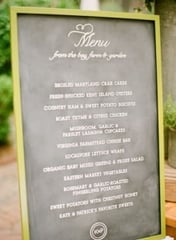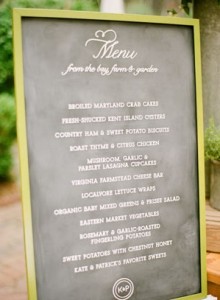Last week at Harbaugh's restaurant, we learned about the first stage of the Service Lifecycle, Service Strategy. As a reminder, we are discussing the Service Lifecycle, in "non-IT" terms, by comparing each of the stages to the experience of dining at our favorite restaurant. Last week, in the Service Strategy stage, we talked about how Jim developed his strategy for his restaurant. Now lets take a quick look at the next stage of the Service Lifecycle, Service Design.
Service Design
Imagine that we have now been seated at a table in Harbaugh's restaurant. There is a menu at the table that provides a listing of all the offerings of the restaurant. This would be the Service Catalog in an "IT world". Jim and his staff took the ideas that originated from his strategy (Service Strategy) and designed a few things. Their focus was on the menu items offered (food and drink), the look and feel of the restaurant, operating hours, the staff required to operate, the training that should be provided to guarantee the quality of the food (taste, temperature, etc.), and the experience the customer receives while at Harbaugh's. Jim also designed the kitchen that would be required to prepare the food offered to the customers.
In the "IT-world", we design services to be fit for purpose (utility - what you get) and fit for use (warranty - how it is delivered), which will be translated into value for our users. We also design the infrastructure required to support the delivery and management of the services we offer. At Harbaugh's, Jim's team designed the offerings on the menu and the processes for: obtaining ingredients, preparing the offerings, delivering the food to the customer, closing out the dining experience (handling payment), the hours of operation, and the layout of the restaurant (to include entertainment). If Jim ever decides to change his menu by adding, removing, or modifying its offerings (or the processes behind them), he'll go back through his design process making sure that all these aspects are taken into account.
In the "IT-world", our organizations follow a similar process as Jim went through when he made sure he was offering the right food items (and experience) to his customers. In the "IT-world" we design our services so that they'll provide value to our users. We design processes for how we'll deliver our services while ensuring that the agreed upon "levels of service" are met (Service Level Agreements - SLAs). We manage the items on our "menus" (or Service Catalog) through a process called Service Catalog Management. While Jim is concerned about having enough food for the dinner rush, we concern ourselves with similar issues like service availability and service capacity. We also design metrics around our implemented processes (and services) to track our success, or failure. These aspects (and more) are all addressed in the Service Design stage of the Service Lifecycle.
Thanks for hanging out at Harbaugh's this week! Next week we'll see what Jim does that ties closely to the Service Transition stage of the Service Lifecycle. Don't forget to check out the specials... Read More
About the author:
 Paul Solisis an Associate at Cask, LLC and is currently providing consulting services to both commercial and federal customers throughout the country. He has worked with clients, ranging from 500 to 500,000 users, to build Service Management programs, roadmaps, services, portfolios and processes in the Financial, Federal, Defense, Technology, and Gaming industries. Paul has over 13 years of IT experience in the areas of ITSM, Systems Administration, Web Development, Network Administration, and Project Management. Paul is a graduate of San Diego State University with a Bachelor's degree in Management Information Systems and the University of San Diego with a Master's degree in Business Leadership.
Paul Solisis an Associate at Cask, LLC and is currently providing consulting services to both commercial and federal customers throughout the country. He has worked with clients, ranging from 500 to 500,000 users, to build Service Management programs, roadmaps, services, portfolios and processes in the Financial, Federal, Defense, Technology, and Gaming industries. Paul has over 13 years of IT experience in the areas of ITSM, Systems Administration, Web Development, Network Administration, and Project Management. Paul is a graduate of San Diego State University with a Bachelor's degree in Management Information Systems and the University of San Diego with a Master's degree in Business Leadership.




